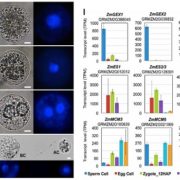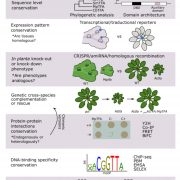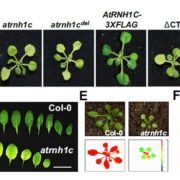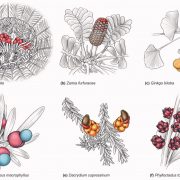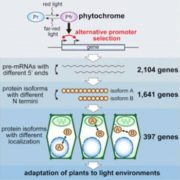A regulatory circuit conferring varied flowering response to cold in annual and perennial plants ($) (Science)
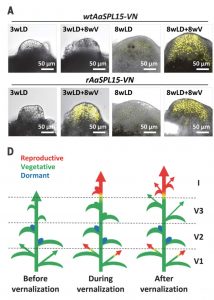 Regulation of flowering in time and space in perennials like Arabis alpina involves two systems. One uses orthologs to FLOWERING LOCUS C (FLC) from A. thaliana; in A. alpine is called PERPETUAL FLOWERING 1 (PEP1) and its repression enables flowering after vernalization. The other system uses microRNA156 (miR156), which allows the flowering response after vernalization only in older meristems. It has been shown that miR156 targets SQUAMOSA PROMOTER BINDING PROTEIN LIKE -15 (SPL-15). Hyun and collaborators, using CRISPR/Cas9 to inactivate SPL-15, show how the two systems are linked in perennials through SPL-15, acting only in older shoots and branches after vernalization. To test SPL-15’s role in annuals, lines from an interspecific cross between A. alpina and annual Arabis montbretiana showed that the flowering response occurred in young shoots after vernalization through photoperiod and without SPL-15 mediation. (Summary by Cecilia Vasquez-Robinet) Science 10.1126/science.aau8197
Regulation of flowering in time and space in perennials like Arabis alpina involves two systems. One uses orthologs to FLOWERING LOCUS C (FLC) from A. thaliana; in A. alpine is called PERPETUAL FLOWERING 1 (PEP1) and its repression enables flowering after vernalization. The other system uses microRNA156 (miR156), which allows the flowering response after vernalization only in older meristems. It has been shown that miR156 targets SQUAMOSA PROMOTER BINDING PROTEIN LIKE -15 (SPL-15). Hyun and collaborators, using CRISPR/Cas9 to inactivate SPL-15, show how the two systems are linked in perennials through SPL-15, acting only in older shoots and branches after vernalization. To test SPL-15’s role in annuals, lines from an interspecific cross between A. alpina and annual Arabis montbretiana showed that the flowering response occurred in young shoots after vernalization through photoperiod and without SPL-15 mediation. (Summary by Cecilia Vasquez-Robinet) Science 10.1126/science.aau8197


